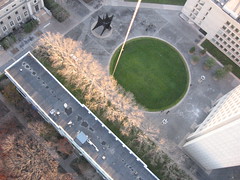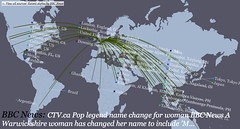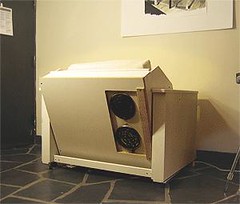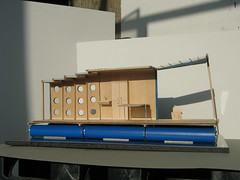Questions about aerial photography
I’ve been at the MobileActive/Unicef workshop in Amman, Jordan since yesterday, and got to present some of my work on low cost mapping with kites and balloons. One thing people have been asking about is if people in informail communities would object to being photographed from above. While I completely understand this question, it does strike me as odd – they’re photographed from space all the time by Navteq and TeleAtlas, without being asked permission.
First, though, I wanted to make it clear that I’m not interested in developing tools for people like myself to unilaterally image a community – the whole idea is to make tools *for* a community to map themselves — as a form of expression, as a tool for community planning, and as an exploratory process. My hope is that the community I’m hoping to work with in Lima will want to publish and distribute their maps, but that is of course their decision to make.
At the same time, it’s also clear that there is a practical and psychological difference between flying a kite/balloon with a camera on it while you are actually in a community, and flying a satellite which they cannot see, having never visited the community you’re imaging. But I’m hoping that the former can form the basis of a more participatory way of mapping contested geographies. In any case, this is a great ongoing discussion, and I’m eager to see how it plays out on the ground in Lima.
Tags: grassrootsmapping, mapping









December 11th, 2009 at 1:54 am
bravo
December 11th, 2009 at 9:47 am
A followup – I forgot to mention that some settlements are trying to stay ‘under the radar’ and of course don’t want to publish pictures of themselves squatting on land. This doesn’t mean that they don’t want to document their geography for their own uses, but in Lima it seems that in general, communities are *trying* to be seen, as a way to protect themselves from eviction. From their perspective, as I understand it, the more they can prove that they exist in a place – photographs and maps can be a form a testimony – so my hope is that they will be interested both in mapping themselves as well as publishing those maps.
Mikel – what’s your perspective on this having spent time in Kibera?
December 15th, 2009 at 1:38 pm
In Kibera, being such a long standing temporary settlement, the situation in similar to Lima .. the view is that representation aids legitimacy. Where it gets interesting are the multiple overlapping view of tenure and ownership .. without official legal status, it’s immensely complicated.
What’s confounding to me is when invisibility is empowering, and justified. In a situation like the West Bank, I can’t see how it’s justified. However, a place like the Burma-India border .. mapping refugees routes through the forest would place people already suffering suffering at severe risk.
Is there some objective way of measuring those exceptional cases when geographic secrecy is justified? Or does it always depend on your political point of view?